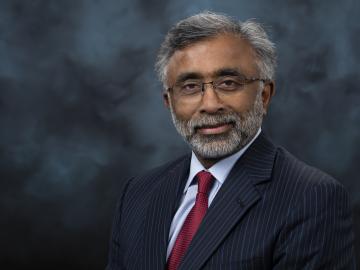
Filter News
Area of Research
- Advanced Manufacturing (1)
- Biology and Environment (29)
- Clean Energy (27)
- Computational Biology (1)
- Computational Engineering (1)
- Computer Science (1)
- Fusion and Fission (12)
- Fusion Energy (1)
- Isotopes (10)
- Materials (14)
- Materials for Computing (10)
- National Security (6)
- Neutron Science (12)
- Nuclear Science and Technology (1)
- Quantum information Science (2)
- Supercomputing (20)
News Type
Date
News Topics
- 3-D Printing/Advanced Manufacturing (11)
- Advanced Reactors (1)
- Artificial Intelligence (6)
- Big Data (2)
- Bioenergy (10)
- Biology (19)
- Biomedical (10)
- Biotechnology (4)
- Buildings (6)
- Chemical Sciences (6)
- Clean Water (3)
- Climate Change (4)
- Composites (3)
- Computer Science (23)
- Coronavirus (6)
- Critical Materials (2)
- Cybersecurity (4)
- Decarbonization (4)
- Energy Storage (14)
- Environment (24)
- Exascale Computing (2)
- Frontier (4)
- Fusion (6)
- Grid (4)
- High-Performance Computing (14)
- Isotopes (10)
- ITER (2)
- Machine Learning (1)
- Materials (14)
- Materials Science (14)
- Mercury (3)
- Microscopy (7)
- Nanotechnology (8)
- National Security (7)
- Neutron Science (12)
- Nuclear Energy (6)
- Physics (3)
- Polymers (4)
- Quantum Computing (4)
- Quantum Science (9)
- Security (3)
- Space Exploration (1)
- Summit (9)
- Sustainable Energy (13)
- Transportation (10)
Media Contacts

Marm Dixit, a Weinberg Distinguished Staff Fellow in the Emerging and Solid-State Batteries Group at ORNL, has been awarded a Toyota Young Investigator Fellowship for Projects in Green Energy Technology from the Electrochemical Society.

A multidisciplinary team of scientists at ORNL has applied a laser-interference structuring, or LIS, technique that makes significant strides toward eliminating the need for hazardous chemicals in corrosion protection for vehicles.

Of the $61 million recently announced by the U.S. Department of Energy for quantum information science studies, $17.5 million will fund research at DOE’s Oak Ridge National Laboratory. These projects will help build the foundation for the quantum internet, advance quantum entanglement capabilities — which involve sharing information through paired particles of light called photons — and develop next-generation quantum sensors.

Thomas Zacharia, director of the Department of Energy’s Oak Ridge National Laboratory, was recognized with a corporate leadership award from the National Graduate Education for Minorities, or GEM, Consortium during the organization’s leadership gala on Sept. 9 as part of its annual meeting.

Nearly a billion acres of land in the United States is dedicated to agriculture, producing more than a trillion dollars of food products to feed the country and the world. Those same agricultural processes, however, also produced an estimated 700 million metric tons of carbon dioxide equivalent in 2018, according to the U.S. Department of Agriculture.

Anyone familiar with ORNL knows it’s a hub for world-class science. The nearly 33,000-acre space surrounding the lab is less known, but also unique.

An international problem like climate change needs solutions that cross boundaries, both on maps and among disciplines. Oak Ridge National Laboratory computational scientist Deeksha Rastogi embodies that approach.

A 25-year career with the U.S. Navy, commanding combat missions overseas, brought Tom Kollie back to where he came from — ready to serve his country in a new way.

Pengfei Cao, a polymer chemist at ORNL, has been chosen to receive a 2021 Young Investigator Award from the Polymeric Materials: Science and Engineering Division of the American Chemical Society, or ACS PMSE.

ORNL has licensed its wireless charging technology for electric vehicles to Brooklyn-based HEVO. The system provides the world’s highest power levels in the smallest package and could one day enable electric vehicles to be charged as they are driven at highway speeds.


